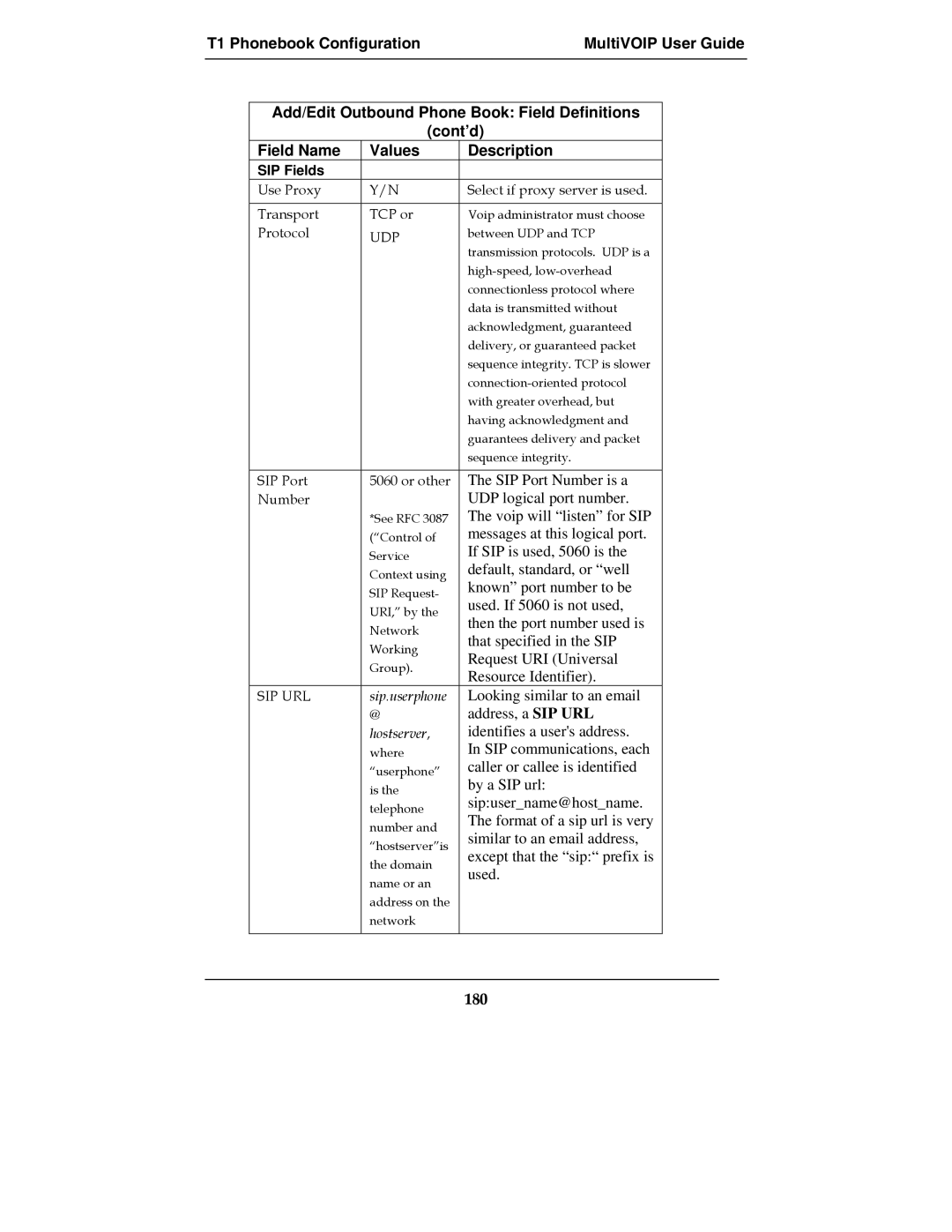T1 Phonebook Configuration | MultiVOIP User Guide | |||
|
|
|
|
|
|
|
|
|
|
| Add/Edit Outbound Phone Book: Field Definitions |
| ||
|
| (cont’d) |
| |
| Field Name | Values | Description |
|
| SIP Fields |
|
|
|
| Use Proxy | Y/N | Select if proxy server is used. |
|
|
|
|
|
|
| Transport | TCP or | Voip administrator must choose |
|
| Protocol | UDP | between UDP and TCP |
|
|
|
| transmission protocols. UDP is a |
|
|
|
|
| |
|
|
| connectionless protocol where |
|
|
|
| data is transmitted without |
|
|
|
| acknowledgment, guaranteed |
|
|
|
| delivery, or guaranteed packet |
|
|
|
| sequence integrity. TCP is slower |
|
|
|
|
| |
|
|
| with greater overhead, but |
|
|
|
| having acknowledgment and |
|
|
|
| guarantees delivery and packet |
|
|
|
| sequence integrity. |
|
|
|
|
|
|
| SIP Port | 5060 or other | The SIP Port Number is a | |
| Number |
| UDP logical port number. |
|
|
| *See RFC 3087 | The voip will “listen” for SIP |
|
|
| (“Control of | messages at this logical port. |
|
|
| Service | If SIP is used, 5060 is the |
|
|
| Context using | default, standard, or “well |
|
|
| SIP Request- | known” port number to be |
|
|
| used. If 5060 is not used, |
| |
|
| URI,” by the |
| |
|
| then the port number used is |
| |
|
| Network |
| |
|
| that specified in the SIP |
| |
|
| Working |
| |
|
| Request URI (Universal |
| |
|
| Group). |
| |
|
| Resource Identifier). |
| |
|
|
|
| |
| SIP URL | sip.userphone | Looking similar to an email |
|
|
| @ | address, a SIP URL |
|
|
| hostserver, | identifies a user's address. |
|
|
| where | In SIP communications, each |
|
|
| “userphone” | caller or callee is identified |
|
|
| is the | by a SIP url: |
|
|
| telephone | sip:user_name@host_name. |
|
|
| The format of a sip url is very |
| |
|
| number and |
| |
|
| similar to an email address, |
| |
|
| “hostserver”is |
| |
|
| except that the “sip:“ prefix is |
| |
|
| the domain |
| |
|
| used. |
| |
|
| name or an |
| |
|
|
|
| |
|
| address on the |
|
|
|
| network |
|
|
|
|
|
|
|
